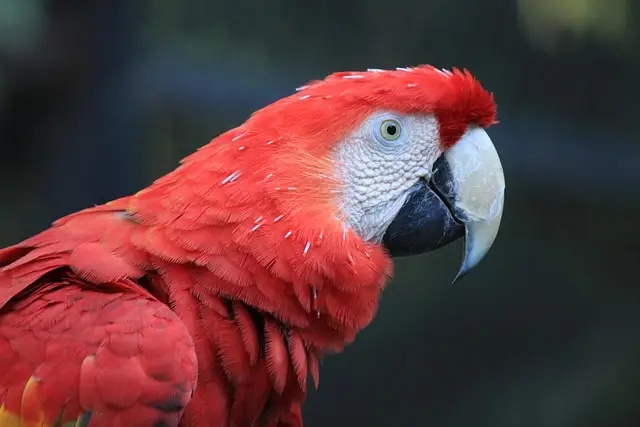Sheep and goats are two of the oldest animals raised by humans. People have used them for thousands of years for meat, milk, wool, and hides. At first glance, they may look quite similar. They’re both medium-sized, have hooves, and eat grass. But if you look more closely, sheep and goats are very different animals in many ways.
In this article, you’ll learn the main differences between sheep and goats, from how they look to how they behave and even how they live.
1. Different Species

First of all, sheep and goats are not the same animal. They are different species. Sheep belong to the species Ovis aries, while goats are Capra hircus. That means they cannot breed together and have babies. Even though they look similar, they are genetically different.
2. Ears, Tails, and Horns
You can often tell sheep and goats apart by looking at their ears, tails, and horns.
- Sheep usually have floppy ears that hang down. Their tails are short and point downward. Farmers often dock (cut) their tails to keep them clean.
- Goats often have upright ears that point out or up. Their tails are short too, but they usually point upward.
Horns are also different:
- Sheep (if they have horns) usually have thick, curled horns.
- Goats often have straighter, narrower horns that point up or back.
3. Hair vs. Wool

Sheep are best known for their wool. Most sheep breeds have thick, fluffy wool that is used to make clothes, blankets, and yarn. Their wool grows continuously and must be sheared (cut off) at least once a year.
Goats usually have hair, not wool. Their hair is shorter and less fluffy. Some goat breeds, like the Angora and Cashmere goats, do produce soft fiber, but it’s still not the same as sheep’s wool.
4. Beards and Smell
Most male goats (bucks) grow beards. Some female goats may also have small beards. Sheep, on the other hand, rarely have beards.
Male goats can also have a strong smell, especially during mating season. They use this smell to attract females. Sheep do not smell this way, and rams (male sheep) usually have a milder scent.
5. Behavior and Personality
Sheep and goats behave very differently.
- Sheep like to stay together in a group. They are gentle, quiet, and follow each other. They depend on the flock for safety. If one sheep moves, the rest follow.
- Goats are more curious and independent. They like to explore, climb, and investigate new things. They are smarter, more playful, and sometimes more stubborn.
Because of this, goats are often harder to keep in one place. They can jump over fences or climb onto roofs and trees!
6. What They Eat
Sheep and goats eat different kinds of plants.
- Sheep are grazers. They prefer grass and low plants. They eat close to the ground and like open pastures.
- Goats are browsers. They like to eat leaves, shrubs, twigs, and weeds. They will often stand on their hind legs to reach tree branches.
This means goats are more helpful for clearing brush and unwanted plants, while sheep are better for keeping lawns or fields trimmed.
7. Hooves and Climbing Skills
Goats have special hooves that help them climb. Their hooves are hard, narrow, and well-suited for rocky areas. That’s why goats are often found in hills or mountains. They are excellent climbers and can walk along very narrow ledges.
Sheep have wider, softer hooves. They are better suited for flat, grassy land. Sheep do not climb as well as goats.
8. Sounds They Make
Sheep and goats have different voices.
- Sheep make a sound called “baa” or “bleat.”
- Goats make a similar sound, but it’s often louder or more nasal. It may sound more like “maa” or “meh.”
If you hear both animals together, you can start to tell them apart just by the sounds they make.
9. Different Kinds of Milk
Both animals can produce milk for people to drink, but their milk is different.
- Goat milk is easier to digest for some people. It has smaller fat particles and less lactose than cow’s milk. It has a strong flavor.
- Sheep milk is thicker and richer. It’s often used to make fancy cheeses like feta, Roquefort, and pecorino.
Sheep don’t produce as much milk as goats, but their milk is high in nutrients.
10. Different Uses
Both animals are useful in many ways, but they are used for different things:
- Sheep are mostly raised for wool, meat (lamb or mutton), and sometimes milk.
- Goats are mainly raised for milk, meat (chevon), fiber (from special breeds), and even as pets.
In some cultures, goats are more common, while in others, sheep are more important.
11. Lifespan and Size
On average, sheep and goats can both live around 10 to 15 years, depending on how well they are cared for.
- Goats tend to be slightly smaller and lighter than most sheep breeds.
- Sheep can be heavier, especially the wool-producing breeds.
There are many types of sheep and goats, so their size can vary a lot.
12. Social Differences
Sheep tend to be more social and depend on their flock. If one sheep gets separated, it may become stressed or scared. Goats are more independent and don’t mind being alone as much.
This also affects how farmers keep them. Sheep need good fences but are less likely to try to escape. Goats need strong fences, because they will test every part of it!
13. Sheep and Goats Together
Even though they are different, sheep and goats can live together on a farm. They may share the same pasture or barn, but they need different food and care. Goats can sometimes bully sheep, especially over food, so farmers must watch them closely.
It’s also important not to feed them the same minerals. For example, goats need more copper than sheep. Too much copper can make sheep sick.



